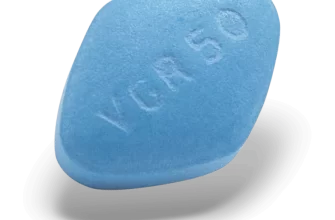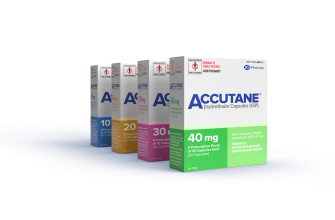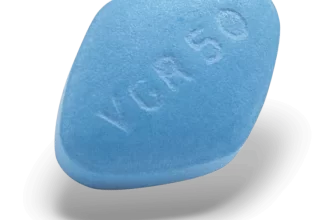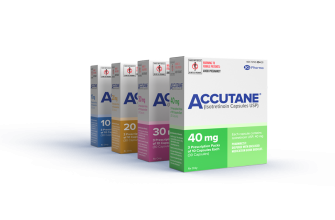Prednisone isn’t typically a first-line treatment for bronchitis, but your doctor might prescribe it to reduce inflammation in severe cases. Dosage depends heavily on your specific condition, age, and overall health. Expect a daily dose ranging from 20 to 60 milligrams, usually for a short course of 5 to 10 days. Always follow your doctor’s instructions precisely.
Never self-medicate. Incorrect dosage can have serious consequences. A higher dose might be used for a brief period to quickly control severe symptoms, followed by a gradual reduction. Your doctor will monitor your progress closely and adjust the dose as needed.
Factors influencing dosage include: the severity of your bronchitis, the presence of other health conditions, potential drug interactions, and your response to the medication. Regular blood tests may be conducted to monitor side effects. Open communication with your physician is paramount throughout the treatment.
Side effects are possible, and vary from person to person. Common ones include increased appetite, weight gain, mood changes, and difficulty sleeping. Report any concerning side effects immediately to your healthcare provider. They will determine if the benefits outweigh the risks in your individual situation.
- Prednisone Dose for Bronchitis: A Detailed Guide
- Understanding Bronchitis and its Treatment
- Acute Bronchitis Treatment
- Chronic Bronchitis Treatment
- Medication Considerations
- When Prednisone is Considered for Bronchitis
- Factors Influencing Prednisone Use
- Typical Prednisone Dosage for Bronchitis
- Duration of Prednisone Treatment for Bronchitis
- Potential Side Effects of Prednisone
- Monitoring Progress and Tapering Off Prednisone
- Seeking Medical Advice for Bronchitis Treatment
- Diagnosis and Treatment Plan
- Monitoring Your Progress
Prednisone Dose for Bronchitis: A Detailed Guide
Prednisone isn’t a first-line treatment for bronchitis, but doctors may prescribe it for severe cases to reduce inflammation. Dosage depends heavily on the severity of your symptoms and your overall health.
Typical Adult Dosage: A common starting dose is 30-60 mg daily for a short duration, usually 5-7 days. Your doctor will adjust this based on your response. They may prescribe a tapering schedule, gradually reducing the daily amount to prevent withdrawal symptoms. For instance, you might take 30mg for three days, then 20mg for two days, followed by 10mg for two days before stopping completely.
Children’s Dosage: Prednisone dosage for children is significantly lower and strictly determined by weight and overall health. Never administer prednisone to a child without explicit instructions from a pediatrician. The doctor will calculate the appropriate dose, likely in milligrams per kilogram of body weight.
Important Considerations: Prednisone has potential side effects including increased blood sugar, fluid retention, insomnia, and mood changes. These vary based on dose and duration of treatment. Open communication with your doctor about any side effects is crucial. Regular monitoring of your condition is necessary during treatment. Your physician will likely want blood tests to check your blood sugar and other important levels.
Alternatives: If your bronchitis is not severe, your doctor may recommend other treatments first, such as bronchodilators or antibiotics (if a bacterial infection is suspected). Prednisone is reserved for cases where these options aren’t sufficient.
Disclaimer: This information is for educational purposes only and doesn’t replace professional medical advice. Always consult your doctor before starting any medication, including prednisone, for bronchitis or any other condition.
Understanding Bronchitis and its Treatment
Bronchitis is an inflammation of the bronchial tubes, the airways that carry air to your lungs. Acute bronchitis, the most common type, usually follows a viral upper respiratory infection like a cold and typically resolves within a week or two. Symptoms include a cough (often producing mucus), chest congestion, shortness of breath, and sometimes a low-grade fever. Chronic bronchitis, a more serious condition, involves persistent inflammation lasting at least three months in two consecutive years and is often linked to smoking.
Acute Bronchitis Treatment
Treating acute bronchitis focuses on managing symptoms. Rest is key. Drink plenty of fluids to thin mucus. Over-the-counter medications like cough suppressants or expectorants might offer some relief. A humidifier can ease congestion. Avoid irritants such as smoke and pollutants. Your doctor may prescribe antibiotics if a bacterial infection is suspected, but most cases are viral and don’t require antibiotics.
Chronic Bronchitis Treatment
Chronic bronchitis treatment is longer-term and more involved. Quitting smoking is paramount. Inhalers can help open airways and reduce inflammation. Bronchodilators relax the muscles around your airways. Corticosteroids reduce inflammation. Regular pulmonary rehabilitation programs can improve breathing and overall fitness. In some cases, your doctor might recommend oxygen therapy.
Medication Considerations
Prednisone, a corticosteroid, is sometimes used for severe bronchitis to reduce inflammation. However, it’s usually reserved for cases that don’t respond to other treatments due to potential side effects. Your physician will determine the appropriate dose and duration of treatment based on your specific needs. Always follow your doctor’s instructions precisely.
| Medication Type | Use in Bronchitis | Potential Side Effects |
|---|---|---|
| Bronchodilators | Opens airways | Tremors, headache, fast heartbeat |
| Corticosteroids (like Prednisone) | Reduces inflammation | Weight gain, increased blood sugar, bone thinning |
| Expectorants | Thins mucus | Nausea, vomiting |
| Cough Suppressants | Reduces coughing | Drowsiness, constipation |
Consult your doctor for diagnosis and a tailored treatment plan. Self-treating can be risky. Early diagnosis and appropriate treatment lead to faster recovery and prevent complications.
When Prednisone is Considered for Bronchitis
Prednisone isn’t a first-line treatment for bronchitis. Doctors typically prescribe it only for severe cases or those not responding to other treatments. This often involves acute exacerbations of chronic bronchitis in individuals with a history of significant airway obstruction. Specifically, prednisone might be considered if you experience significant shortness of breath, wheezing, or a persistent cough producing copious amounts of mucus, despite using bronchodilators (like inhalers) and other therapies. Consideration should also be given if other treatments fail to provide adequate relief within a reasonable timeframe, usually around 7-10 days.
Factors Influencing Prednisone Use
Several factors influence a doctor’s decision to prescribe prednisone. These include the severity of your symptoms, your medical history (especially existing lung conditions like asthma or COPD), your age, and your overall health. A doctor will carefully weigh the potential benefits of prednisone against the risks of side effects, such as increased blood sugar, fluid retention, and weakened immunity. If you’re considering prednisone, open communication with your doctor is paramount. They can determine the appropriate dosage and duration, as well as monitor you for any potential adverse effects. Always follow your doctor’s instructions precisely.
Typical Prednisone Dosage for Bronchitis
Doctors typically prescribe a short course of prednisone for acute bronchitis, usually 5-7 days. A common starting dose is 40-60mg daily, then gradually tapering down the dosage over the course of the treatment. For example, you might take 40mg for three days, then 30mg for two days, followed by 20mg for one day, and finally 10mg for the last day.
However, individual dosages vary significantly depending on factors such as the severity of your bronchitis, your overall health, and your response to the medication. Your doctor will consider these factors and adjust your dosage accordingly. Always follow your doctor’s instructions carefully, and never alter your dosage without consulting them first.
Children will receive a lower dosage, calculated based on their weight and age. A pediatrician will determine the appropriate dose. This should always be under close medical supervision.
Prednisone can have side effects, including increased appetite, weight gain, mood changes, and insomnia. Inform your doctor if you experience any adverse effects. Long-term use of prednisone is generally avoided due to potential risks.
Remember, this information is for educational purposes only and does not constitute medical advice. Always consult with your doctor or other qualified healthcare professional before starting any new medication, including prednisone, to determine the best course of treatment for your specific situation.
Duration of Prednisone Treatment for Bronchitis
Prednisone treatment for bronchitis typically lasts 5 to 7 days. Your doctor might adjust this based on your response to treatment.
Shorter courses are generally preferred to minimize side effects. A rapid improvement in symptoms often justifies a shorter duration. However, premature discontinuation can lead to relapse.
Longer courses might be necessary for severe cases or individuals who don’t respond well to the initial treatment. Your physician will monitor your progress closely and make adjustments as needed.
Remember, strict adherence to your doctor’s prescribed regimen is key for successful treatment and minimizing potential complications. Always discuss any concerns or changes in your symptoms with your healthcare provider before altering the dosage or duration of your medication.
Potential Side Effects of Prednisone
Prednisone, while effective, carries potential side effects. Understanding these helps you manage them.
Common side effects include:
- Increased appetite and weight gain.
- Mood changes, including irritability, anxiety, or insomnia.
- Fluid retention, leading to swelling in the face, ankles, or feet.
- Increased blood sugar levels.
- High blood pressure.
- Muscle weakness.
- Thinning of the skin.
Less common, but serious side effects require immediate medical attention:
- Severe allergic reactions (rash, hives, difficulty breathing).
- Increased risk of infection.
- Gastrointestinal issues, such as ulcers or bleeding.
- Cataracts or glaucoma.
- Osteoporosis.
The severity of side effects often depends on the dosage and duration of treatment. Higher doses and longer treatment periods increase the risk.
Here’s what you can do:
- Report any unusual symptoms to your doctor immediately.
- Follow your doctor’s instructions carefully regarding dosage and duration of treatment.
- Maintain a healthy diet and exercise regularly to mitigate some side effects.
- Discuss potential interactions with other medications you’re taking.
- Monitor your blood pressure and blood sugar regularly, as advised by your doctor.
Your doctor can provide personalized advice and monitor you for any complications. Open communication is key to safe and effective Prednisone use.
Monitoring Progress and Tapering Off Prednisone
Regularly monitor your symptoms. Note any improvements in cough, shortness of breath, and chest tightness. Keep a daily record.
Your doctor will likely schedule follow-up appointments to assess your progress. Attend these appointments diligently.
- Expect your doctor to conduct physical examinations and possibly order chest X-rays or blood tests.
- Openly discuss any side effects you experience, such as increased appetite, weight gain, or mood changes.
Prednisone tapering is crucial. Never stop taking prednisone abruptly. A gradual reduction is necessary to avoid withdrawal symptoms.
- Your doctor will prescribe a specific tapering schedule, usually involving a slow decrease in dosage over several weeks or months.
- Strictly adhere to the prescribed schedule. Do not adjust your dosage without consulting your physician.
- Common tapering schedules include halving the daily dose every few days or reducing the dose by a small amount each week.
During the tapering process, continue monitoring your symptoms closely. If symptoms worsen, promptly contact your doctor. They may adjust the tapering schedule or suggest additional treatment.
Once you’ve completed the tapering schedule, your doctor will likely schedule a final check-up to ensure your recovery is complete and that you’re symptom-free.
Seeking Medical Advice for Bronchitis Treatment
Always consult your doctor or other qualified healthcare professional before starting any treatment for bronchitis, including taking Prednisone. They can accurately diagnose your condition, considering your medical history and other factors. A proper diagnosis ensures you receive the most appropriate and safe treatment plan.
Diagnosis and Treatment Plan
Your doctor will likely perform a physical exam and may order tests, such as a chest X-ray or blood tests, to rule out other conditions and determine the severity of your bronchitis. Based on the diagnosis, they’ll create a personalized treatment plan. This may include medications like antibiotics (if a bacterial infection is present), bronchodilators to open your airways, or cough suppressants to manage symptoms. They’ll explain potential side effects and interactions with other medications you’re taking. Prednisone is sometimes used for severe cases, but its use and dosage must be carefully managed by a doctor. Never self-medicate with Prednisone or other prescription drugs.
Monitoring Your Progress
Follow your doctor’s instructions closely and attend all scheduled follow-up appointments. Report any worsening symptoms or new side effects immediately. This close monitoring allows for adjustments to your treatment plan, ensuring optimal results and minimizing potential risks. Active communication with your healthcare provider is key to effective bronchitis management.








